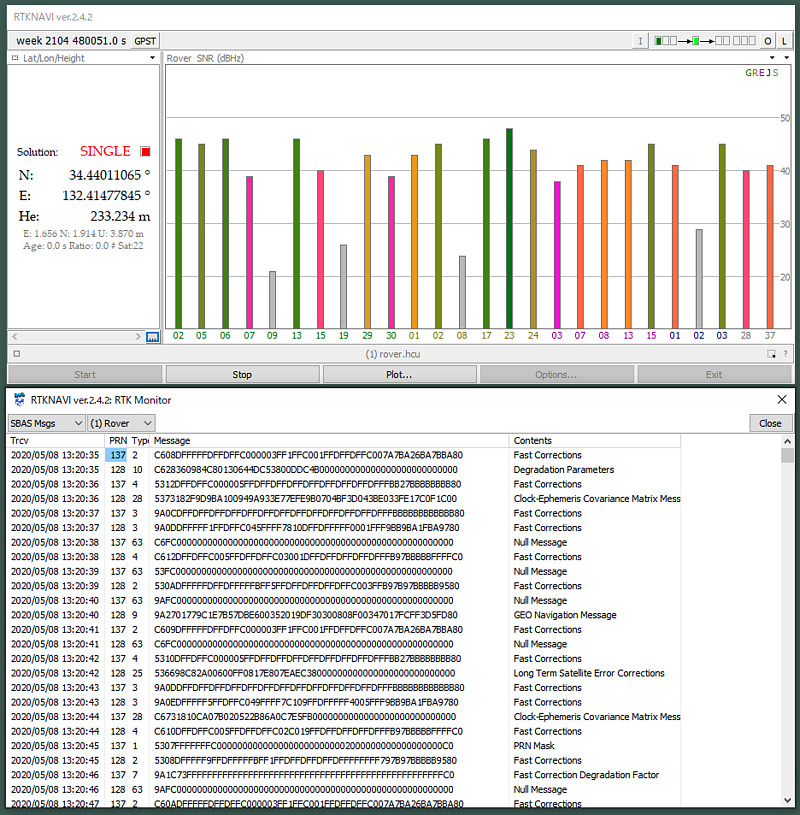Confirmation of SBAS signal over Hiroshima
Professor Takasu of Tokyo University of Marine Science and Technology wrote in his diary and memorandum on May 8, 2020 as Confirmed receipt of QZS-3 SBAS (L1Sb) signal.
I had never known that RTKNAVI of RTKLIB has SBAS (satellite-based augmentation system, read as esbus) message decryption function. Moreover, it displays in an easy-to-understand manner. I thought this was interesting, so I immediately checked the SBAS signal. SBAS signals are signals that indicate positioning accuracy enhancement and integrity for aircraft.

At my place, I could confirm the signals of PRN (pseudo random noise) 128 and PRN137. PRN128 is the SBAS signal of India GAGAN GSAT-10, and PRN137 is the SBAS signal of Michibiki Unit 3 (QZS-3) operated by the Cabinet Office of Japan.
From the figure, you can see that both are broadcasting SBAS signals such as Fast Corrections messages and Long Term Satellite Error Corrections messages.
Certainly around 2006, the SBAS test signal at MT-SAT was transmitted. I used the WAAS (wide area augmentation system, it is pronounced as words) reception function of the handheld receiver Garmin eMAP that I got from overseas mail order, checked the test signal transmission schedule on the homepage of the Kobe Aviation Satellite Center, and checked this test signal. I remembered trying to receive it. When the PRN is displayed on the receiver screen, the current location and waypoints are self-guided by GNSS without relying on RNAV (random navigation, arenabs, radio signs or ground targets) not only in the American sky but also in the Japanese sky. I was very happy that I felt experiencing advanced features before anyone else.
From 2020, the SBAS signal will be transmitted from QZS-3. Professor Takasu verified that the signal of this PRN137 was from QZS-3 in Article on May 9.
On the other hand, I could not receive the PRN129 (SBAS signal from MTSAT-1R) signal. I felt like I could see PRN129 for a moment.
The receiver used is Emlid Reach RTK equipped with u-blox NEO-M8T receiver module. The Emlid Reach RTK can be connected to the internal u-blox NEO-M8T serial port on TCP port number 2000. Using RTKNAVI of RTKLIB, I connected to Emlid Reach RTK with TCP client and observed.